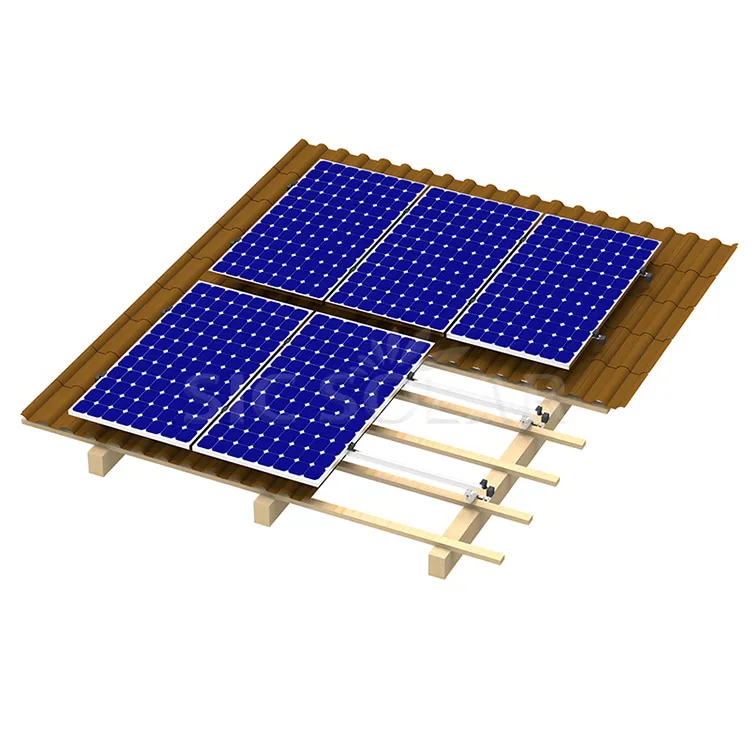What are the types of solar panel mounts?
2024-11-23
Solar panel mounts are essential for securing solar panels in place while optimizing their exposure to sunlight. There are several types of solar panel mounts, categorized based on installation location and adjustability:

These mounts are designed for installation on rooftops and are the most common type.
- Fixed Roof Mounts
Panels are installed at a fixed angle, typically parallel to the roof surface. They are cost-effective but less efficient if the roof's orientation and angle aren't optimal.
- Tilted Roof Mounts
Adjustable to specific angles for better solar exposure, suitable for flat or gently sloping roofs.
- Integrated Roof Mounts
Panels are installed as part of the roof itself, replacing traditional roofing materials. This offers a sleek appearance and dual functionality but comes at a higher cost.
2. Ground-Mounted Systems
Ideal for open spaces where roof installation isn't practical.
- Standard Ground Mounts
Panels are mounted on a fixed frame anchored to the ground. These are easy to access for maintenance and allow for optimal placement.
- Pole-Mounted Systems
Panels are mounted on poles, which can be single-pole (supporting one or several panels) or multi-pole (for larger installations). Some pole mounts also support tracking systems.
- Tracking Ground Mounts
Equipped with mechanisms to adjust panel orientation throughout the day to follow the sun’s path. There are two types:
- Single-Axis Trackers: Rotate panels along one axis (east-west).
- Dual-Axis Trackers: Adjust panels along both vertical and horizontal axes for maximum efficiency.
3. Carport and Canopy Mounts
These are dual-purpose systems where panels are mounted on a structure that serves as a carport or canopy, providing shade and generating energy simultaneously. Popular in parking lots or as standalone setups for residential or commercial use.
4. Floating Solar Mounts
Panels are installed on floating structures in bodies of water like lakes or reservoirs. These mounts utilize unused water surfaces, reduce land use, and offer cooling effects that enhance panel efficiency.
5. Facade Mounts
Panels are attached to the walls of buildings, either flat or at an angle. Though less efficient than roof or ground-mounted systems, they serve as architectural features and are useful when roof or ground space is limited.
6. Portable and Adjustable Mounts
Designed for temporary or small-scale installations, such as RVs, boats, or off-grid applications. These mounts are lightweight, adjustable, and easy to set up and move.
Each type of mount has unique benefits and is chosen based on factors like location, budget, energy goals, and environmental considerations.


